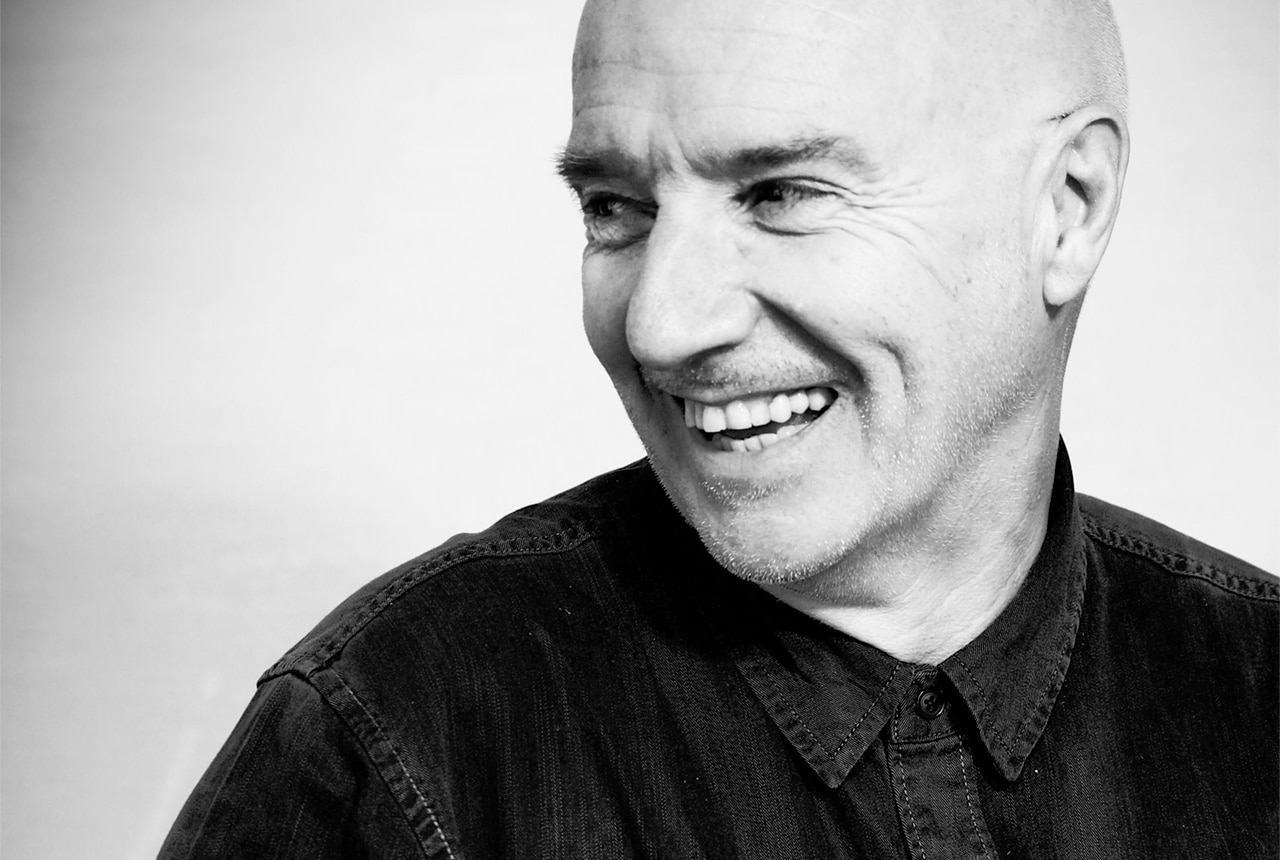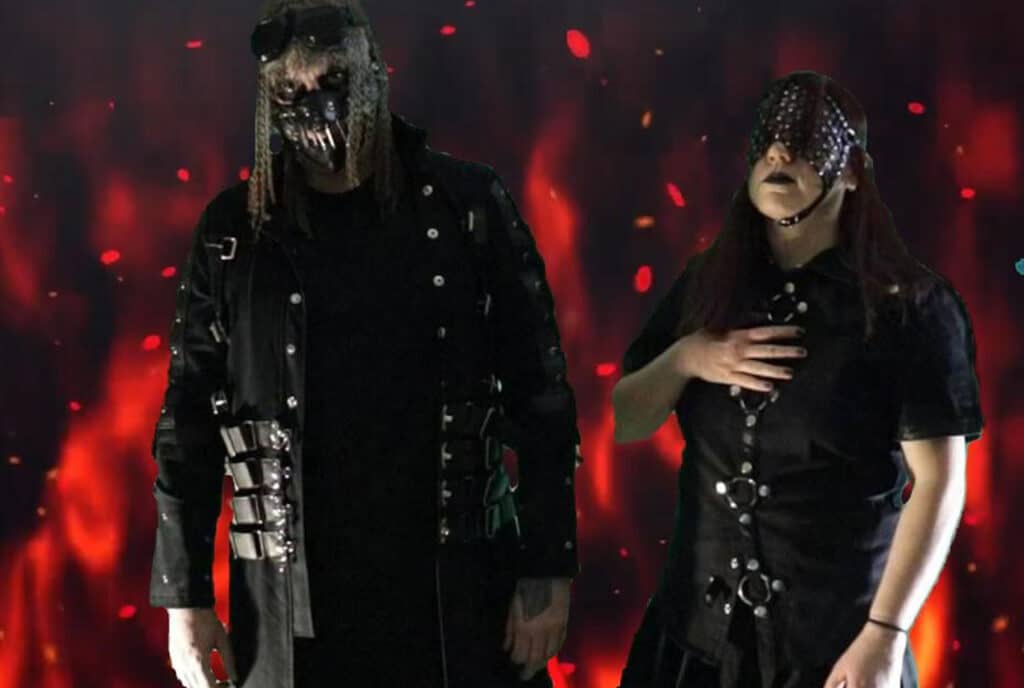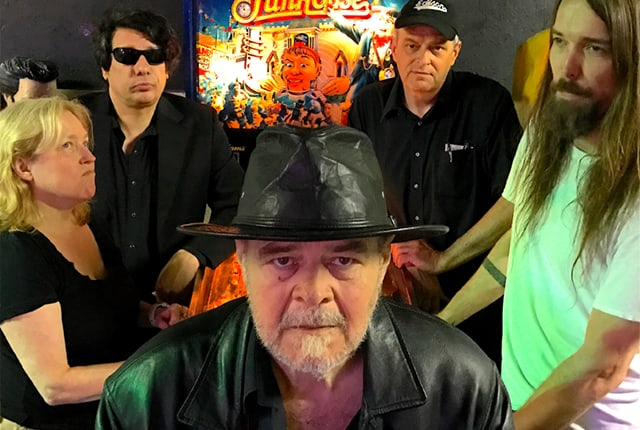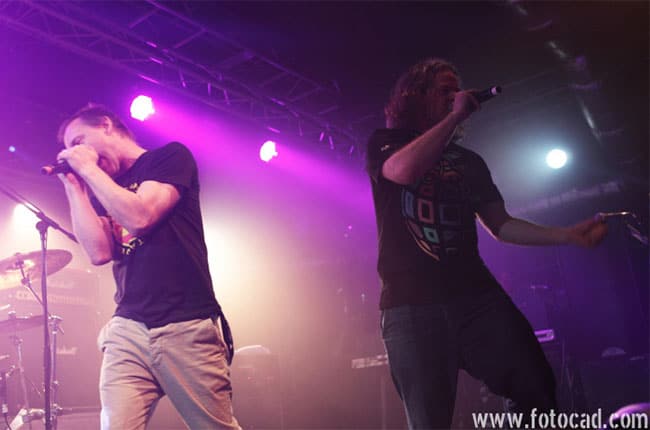Like many musicians, Midge Ure has ventured into online performances due to Covid-19 putting traditional concerts on hold. He’s strived to make the quality as high as possible by extensively researching the best possible equipment and techniques to present his music. The result is the “Backstage Lockdown Club,” a subscription-based service that provides access to live performance/Q&A events. Its launch roughly coincided with the 40th-anniversary boxset re-issue of “Vienna,” Ure’s first album with Ultravox. Over Skype, he talked about that album, “Backstage Lockdown Club,” and more.
A new 40th Anniversary edition of Vienna recently came out. What are your thoughts on the album and the re-issue?
I’m really proud of it. Oddly, it’s getting better reviews now than it did back in the day. I think it was a bit of a shock to people. It was a bit of an oddity to a lot of people, certainly outside the UK. It is something that still is being seen as a kind of benchmark; in ’79, we started writing it; in ’80 we recorded it. It’s quite amazing that it’s got the treatment it has. I suppose I’m not overly keen on reissues and stuff because the labels who own the stuff tend to do it as cheaply and nastily as possible. But they haven’t done that with this. They have really gone to town and spent a long time going through the archives to piece together all the elements that would make this appealing to the hardcore fan.
Was the band directly involved with putting it together?
We were all involved. Everything was run past us. It’s basically Chrysalis Records, the guys that we did it for in the first place 40 years ago. A few years back, they re-bought the company. And therefore, they got the old catalog back, so they’re as proud of it was we are. They wanted to do the best job possible. So we’ve spent a lot of time, a lot of effort going through all the stuff and listening to the archive stuff, which I found quite difficult. I don’t like going back and listening to stuff. The thing that really shook me was the quality of the live recordings. There are two live recordings on it, one in St. Albans and one in London, from 1980. Knowing the incredibly basic equipment we had, what powerhouse of a band Ultravox were. It’s really powerful and atmospheric and all this stuff you would imagine. So that was a great find, getting those.
Looking back, have your views of the album or any particular tracks changed at all?
Not really. Tim Burgess, the singer from the Charlatans, has recently, during lockdown, done these kind of Twitter album parties. So I did one for Vienna, and I sat with my headphones on and listened to the album, probably for the first time in way over 35 years. I listened to it, sitting tweeting about it and answering people’s questions about it. And I’d forgotten just what it sounded like. It took me straight back to how we recorded it. As I said, we had incredibly basic equipment. We had three weeks to record and mix that record. So there was a lot of naivety and pressure and push and absolute disregard for trying to find a three-minute hit single. We just made an album. We made a piece of music that we were happy with. And despite all our efforts, it became commercially successful.
“All Stood Still,” which is the finishing track on the original album, is that classic example, I think, of what Ultravox was: a rock band who used technology, a rock band who used violins and violas. You get the pulsating running bass synth and some heavy grungy guitar and driving synthesizer. We were incredibly fortunate to have Billy Curry in the band; he was always in the band from day one. His way of playing a synthesizer solo was more akin to Jimmy Hendrix than it was to Kraftwerk. So you just listened to that, and the guitar and the synthesizer can intertwine and pull bits from each other. And it really summed up what Ultravox was all about at that moment in time.
What was Conny Plank like to work with as a producer?
Conny was very much an engineer producer, and that was his description. He had nothing to do with the music arrangement or nothing to do with any of the melodies or structure of the music. That was entirely down to the musicians. His skill was electronics. His skill was in the studio. For example, when we played the song “Vienna” to him live, he sat in the studio very quiet, and he said, “You know, this tune, this melody, it reminds me of an old man and an empty ballroom by a piano. And he’s very tired because he’s played the same melody for 40 years.” And that was the sound that he created. If you listen to the piano in “Vienna,” it’s very haunting and very atmospheric. He spoke in that kind of cinematic form, because his English wasn’t great. But it could describe what the sound would feel like, in pictures.
“Sleepwalk” was recorded first and secured you a record deal. How did that come to be the first track from “Vienna” that you recorded?
Chrysalis got tired of us not doing demos. Sometimes in a demo, you make something, and you have an atmosphere or a feeling or a sound that you cannot recreate. So we refused to do demos. Not because we didn’t want to; it’s just that for that very reason. If they put us in a 24-track studio and we captured something, maybe you could keep that and work around it when you came to doing the master. But they got tired and just put us into the studio for two days. They put us into Air Studios in London and just said, “Look, come out with something.” And I think they wanted us to just go in and play all the songs live so they’d have a tape that they could play to the bosses. And we did one song, and that one song was “Sleepwalk.” So we went in and created the track that you here now. Connie Plank remixed it and rebalanced it to make it fit in with the rest of the album. But that was it; they signed us on the strength of that one song.
So did “Sleepwalk” set the tone for the rest of the album?
It seemed to sum up what Ultravox was. There’s no guitars on it. It’s all synthesizers, it’s all driving. It’s acoustic drums. There’s no bass or guitars or anything else. It just seemed to suit the moment. It seemed to suit the time and it set up what the album was going to bring. In those days, the singles always came out like a month before the album did. So you wanted something that would set up just what the album was going to provide.
How have these “Backstage Lockdown Club” performances been going?
It’s been going incredibly well. I have to say, I think I probably spent more time researching the technology to do it than I have actually doing it. I was in Australia and New Zealand finishing off the 1980 Tour. I was playing entire Vienna album and selections of the first Visage album, celebrating the year 1980. I was there when we started hearing about this COVID-19 thing in China. By the time we left New Zealand to go to Australia, New Zealand had shut down. This was back at the beginning of March. So this whole scenario was chasing us around Australia. When I got back from Australia, everything was gone—all the festivals, the tour I was meant to be doing right now as we’re speaking.
And I realized that the reality was that this was something unprecedented. This wasn’t just something happening in Europe. It was happening all around the world. So life, as we knew it, could stop for six months. And recently you kind of think, “Okay, well, it’s more than six months. This is really horrendous. This could be a year. This could be two years.” So I came up with the concept of the club where I can still connect with an audience and they can connect with me, on a reasonably good basis. Not as an absolute replacement for live concerts and live music. Good, live performance is something above and beyond just sounding and looking good. It’s about the feel and the atmosphere and the excitement and the buildup. The thumping your chest when you hear the PA kick in; it’s all those things.
I wanted to do something that was the next best thing. Rather than just singing into a webcam, which a lot of artists are doing and doing very well, I wanted to do something a bit different. I wanted to do something that looked like a high-quality production and sounded like it had been recorded in the studio, but for live performance. That was the idea. And I’ve now got people from all over the world to set their alarms, to get up really early in the morning, or stay up really late at night to watch me do these things live. So it was great.
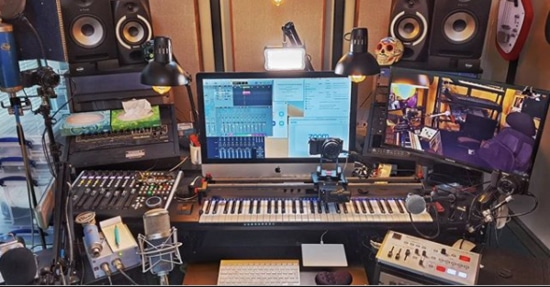
Did you encounter any challenges getting going with it?
I think technically, yes, a lot of technical challenges. It’s not too far removed from a home audio recording, but broadcasting is a whole different thing. There are delays involved between the audio and the visuals. And there is no handbook. I don’t have someone here; I don’t have an engineer here, telling me how to fix all this stuff. I couldn’t call someone in because of lockdown, so I had to do an awful lot of research as to how to do this and on which cameras to use for the best quality that I could get. I had to learn how to use the audio/visual mixer that I’ve got and all that stuff. So that was a massive learning curve, but I’ve been passing the information on to other artists, because they’ve seen what the result is, and they’re saying, “Well, how come yours looks the way it does and a lot of the other ones I’ve seen don’t?” It’s because I’ve spent a lot of time, a good 2 or 3 months, putting all the elements together to do this. So it’s been an uphill struggle, but now, hopefully, you come in and you just do it and it all works.
It seems to be somewhat of an extension of the solo tours you’ve done, where you take audience questions and requests.
I can answer people’s questions directly. Of course, I did the “Songs, Questions and Answers” tour earlier in the year, around America and Canada. And that has an element of that; people can shout out questions and you talk about things. This is an extension of that, but I can do it not just in one place. I don’t have to be in Washington talking to those 300 or 400 people in front of me. I can be talking to people all around the world. People can post prior to me doing these events; they can request specific songs, which gives me a little bit of time to go and figure out which songs they’re talking about. Because I’ve usually forgotten what they are, or I need to relearn or go and think, “Okay, is it possible to do this song on an acoustic guitar?’ and then I try and find a way of doing it. It’s something I would probably never, ever do on a tour.
Have any songs requests surprised you?
One of the ones that cropped up recently was one that coincided with the anniversary of the Berlin Wall coming down. I wrote a song having watched the Berlin Wall come down, at the time, in my studio. I was so taken with this monolith, this beast of a thing that divided the city in half and divided families. So when it came down, I wrote a song about it, but in a Bert Brecht/Kurt Weill kind of way, in a 1930s Berlin cabaret type tune. It’s called “Tumbling Down.” So I just decided to play it. And it’s not the sort of thing that I would normally do. It just felt right. It’s great. If people don’t want to hear it, they can just tune out and go and make a cup of coffee or something during that song. It’s not like you’re trapped in a room with the doors closed around you and you have to sit and listen to everything. The option is there to go and dip out when you feel like it. But, I have to say the response from all of it has been incredibly positive.
Have you debuted any new songs?
I haven’t done any new material yet because nothing I do is finished until it’s finished. I work in a very different way than most other songwriters that I know. Most people write the songs and go into the studio. I go into the studio with an idea and then create the entire thing from scratch. And sometimes, the lyrics and vocals are the last thing to go on. So I don’t really have anything that’s in a complete enough state to do. It’s like stuff going into a funnel; it goes in at the top end and then it gets narrower and narrower and narrower. And then out the end of the funnel, that’s when I’ve got to do all the vocals and mix the tracks. And they all come at once. It’s just how I work.
I saw the “Rock Meets Classic” shows listed on your website. That seems like an interesting concept; could you talk about that?
It’s a very German thing. It’s never really gone outside mainland Europe before. And I’m not sure it will, now. It’s an orchestra with a rock band and a variety of vocalists, and they do orchestral versions of classic rock tunes. So you get, for example, Ian Gillan doing Deep Purple or you get Alice Cooper doing some of his stuff. Or Europe or whoever is coming along, or Uriah Heep. You tend to get these really eclectic mixes of artists. So the one for next year has got Joey Tempest from Europe and Dee Snider from Twisted Sister and me. How does that work? How could that possibly appeal to one audience? But in Germany, the music is the important thing, not necessarily the clique or the clan that a particular music is associated with.
Is there any collaboration between the vocalists?
There is, usually at the end of the night. There are photographs of Alice Cooper and I standing together, sharing a microphone, which is a bit of an odd thing to see but a great thing to do. So you tend to kind of have little collaborations. I did a collaboration on the last one I did. I came on and did some guitar with Dan McCafferty from Nazareth. So, a couple of Scots on stage playing music. They do like to try and mix it up a bit. I also did a Thin Lizzy thing the last time, when I played harmony guitar on “The Boys are Back in Town.” So it’s just a lovely opportunity to go on and do some strange things that you normally wouldn’t do. You know, music is music. Someone else decided a long time ago to divide it up into little slices of cake and never two of those slices of cake should meet together. And I’ve never seen it like that at all. It’s either good or bad.
